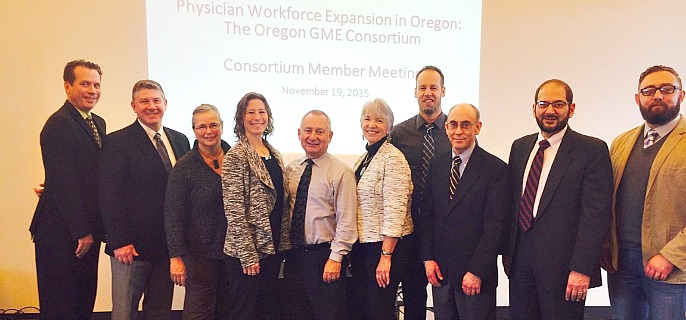
CONTRIBUTED PHOTO
Like many states across the country, Oregon faces a critical primary care physician shortage. A recent study estimates the need for an additional 1,726 physicians (all specialties), 332 nurse practitioners, and 168 physician assistants in Oregon by 2020.i Clearly, Oregon is in critical need of a solution.
To address this need, hospitals, health systems – including Good Shepherd Health Care System in Hermiston – physician groups and both Oregon medical schools have come together to form the Oregon Graduate Medical Education (GME) Consortium. Consortium members agree that urgent steps must be taken to ensure rural Oregonians, as well as those from underserved communities, have access to doctors when they need them. Along with Good Shepherd, consortium members who have contributed or pledged to contribute, significant financial or in-kind resources to complete the planning process, include St. Anthony’s Hospital in Pendleton, Grande Ronde Hospital in La Grande, Oregon Health Sciences University and more.
“In most circumstances, residents who choose a rural program end up practicing medicine within 90 miles of where they do their residencies,” said Good Shepherd Chief Operations Officer Jim Schlenker said. “That is great news for the rural communities that we serve. The other benefit is when a community acquires one new family practice physician – it can help reduce mortality by up to nine percent. As a community set for growth we (GSHCS) want to make sure we have the health care services available to help keep our community happy and healthy well into the future.”
Cathryn Cushing, executive director for the Oregon GME Consortium, said the consortium is designed to increase the number of physicians in rural communities.
“When physicians complete their residencies in rural locations, it is more likely they will stay and establish practices in those communities,” she said. “Unfortunately, in 2011, Oregon had only 8.4 primary care residents per 100,000 population, ranking the state fortieth in the nation. This is why the Oregon GME Consortium will focus on establishing new, or expanding existing, residency programs to address the coming physician shortage.”
To meet the demand for primary care due to a growing and aging population and those newly insured under the Affordable Care Act, a 38-percent increase in the primary care physician workforce is needed in Oregon by 2030.
“Increasing the number of primary care providers is important for the health of Oregonians, especially those in rural areas,” Cushing said. “Primary care physicians improve outcomes for patients and patient care while lowering cost. The Oregon GME Consortium will help Oregon achieve this winning strategy.”










